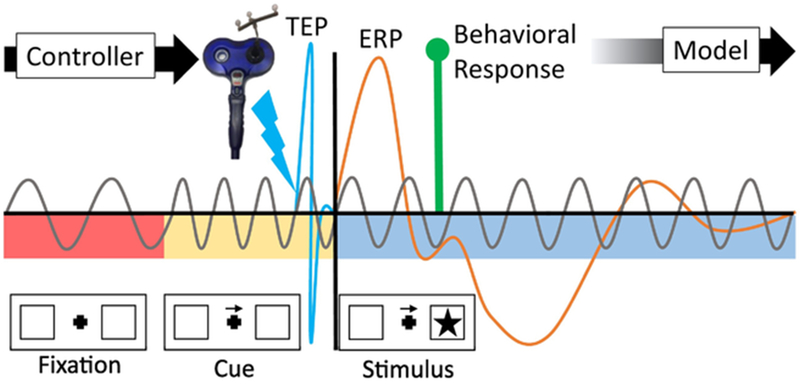Fig. 3.

Personalizing TMS at the trial level. Cognitive events can be controlled to identify specific cognitive, behavioral, and neural signatures. In this schematic, a traditional Posner cued attention paradigm (Posner, 1980) proceeds from a fixation (red epoch) to a cue (yellow epoch) to a stimulus (blue epoch). In a TMS-EEG paradigm (for instance, if the TMS is administered to the frontal eye fields (Grosbras and Paus, 2002)), an algorithm could make use of the timing, spectral content, and amplitude of the TMS-evoked potential (TEP), ERP (and its sources []) due to the stimulus, and use data before or during the current stimulus to train a behavior-predictive statistical model. Ideally, these measures will be selected for their role in a mechanistic model, but can also be fitted when a good dynamic model is unavailable. The model can adaptively update over trials and use the controller (e.g., a computer script) to modify the timing, amplitude, frequency, and shape of TMS to improve performance on subsequent trials. If the statistically fitted model relates better to a given “ground truth” model for cued attention, it can help us distinguish among models that link the brain and behavior. (For interpretation of the references to color in this figure legend, the reader is referred to the web version of this article.)
